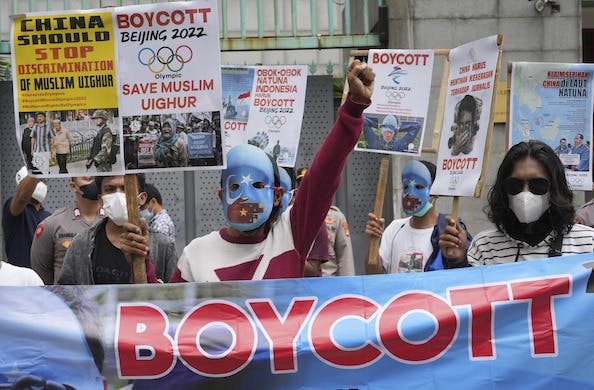Beijing Has Dimmed Spotlight on Tibetan Oppression Since 2008 Olympics
With the Olympics now back in Beijing 14 years later, the Tibetans seem to have been almost forgotten. What happened?

Leading American politicians are calling the 2022 Beijing Olympics the “Genocide Games” in highlighting China’s oppression of Uyghurs in Xinjiang. This year’s concerns echo those about Tibetans in the leadup to the 2008 Beijing Olympics.
Remember, Tibetan protests and the Chinese government’s response back then gained widespread international attention, and there were calls to boycott the 2008 Beijing Olympics.
With the Olympics now back in Beijing 14 years later, the Tibetans seem to have been almost forgotten. What happened?
One barometer and driver of political discourse is coverage by the Drudge Report, and this illustrates the dramatic change between 2008 and 2022. The outlet provided more coverage of Tibet-related issues in 2008 than during the entirety of the past 10 years combined, while its coverage of Xinjiang-related issues has grown significantly in the past few years.
The enactment into law of the Uyghur Forced Labor Prevention Act in December 2021 suggests that China-related human rights issues have gained traction in D.C., perhaps setting the stage for a Tibetan version later this year.
The Tibetan cause has faced an uphill battle, however, to regain attention in the nation’s capital.
Long before the term “cancel culture” gained popularity, Beijing endeavored to force the rest of the world to shun the Tibetan movement and its leader, the Dalai Lama. One of the world’s leading religious figures, the Dalai Lama is a Nobel Peace Prize winner who is widely viewed as a benevolent force for compassion and tolerance. Polls show that he is one of the world’s most admired figures among Americans.
The Chinese government considers the Dalai Lama a dangerous separatist, and has called him a “wolf in monk’s robes.” In recent years, an increasingly powerful China has sought to have other countries view him and his nation the same way.
To a large extent, Chinese foreign policy has worked, as major institutions now maintain distance from the Dalai Lama as a result of intimidation from Beijing. He also has been isolated on the world stage: The spiritual leader’s last meeting with a major leader was in 2016, with President Obama.
China’s success extends beyond isolating the Dalai Lama. The Communist government’s increasingly strong control of communication has made reliable on-the-ground reports of conditions in Tibet almost impossible to obtain. In Washington’s media-driven political environment, no news coverage often means no attention is given to an issue.
One area where the pro-Tibet movement faces challenges in finding points of connection is trade policy. While Uyghur human rights activists can highlight the important role that Xinjiang plays in several sectors of the economy, with implications for supply chains, the Tibetan economy is far less significant than Xinjiang’s. Even if enacted, a Tibetan Forced Labor Prevention Act likely would be less consequential than the Uyghur version.
Despite these near-term obstacles in Washington, Tibet will remain a significant challenge for Beijing. Tibet lies between China and India, the world’s two most populous nations — and, increasingly, economic and military rivals — and Mongolia and Russia have significant populations of Tibetan Buddhists. Geopolitical rivalries will guarantee the centrality and importance of Tibet.
Since the 2008 Olympics, the Chinese government has had success in diverting international attention away from the plight of Tibetans. It’s time for U.S. policymakers to again take notice.

